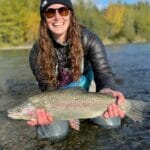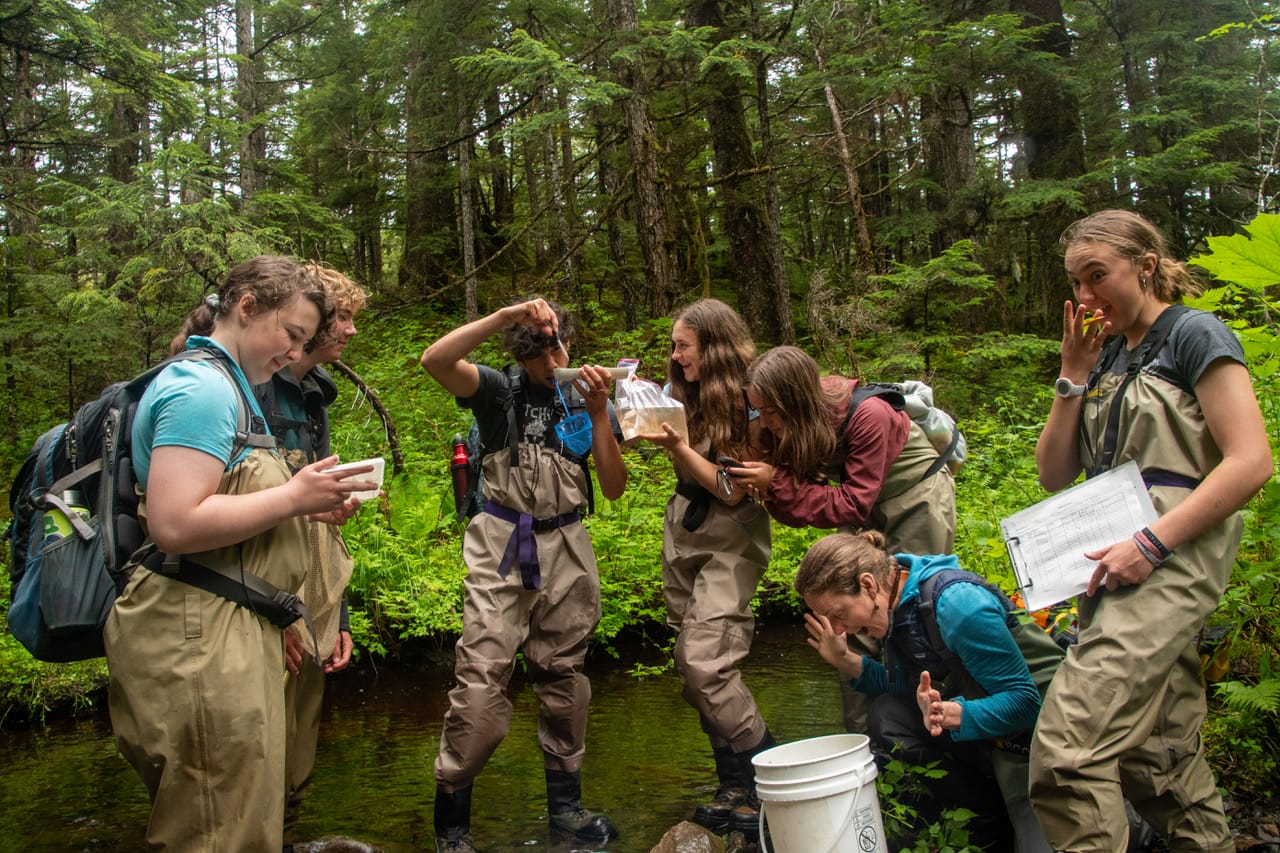If you’ve eaten in a fine dining restaurant anytime recently, chances are you’ve seen Copper River salmon on the menu. These salmon are renowned for their high fat content and are beloved by chefs and foodies around the world.
Most who enjoy this prized fish have probably never heard of the quaint coastal community of Cordova, Alaska where the Copper River meets the sea and where the commercial fishermen who catch the returning salmon drive most of the region’s economy.
Copper River salmon are critical to locals
The Copper River Watershed Project (CRWP) is a local non-profit that works to keep the 26,500 square miles of the Copper River watershed free of fish passage barriers.
“Salmon are a core part of our economy, with the commercial fishery and visiting sportfishermen, not to mention the cultural importance of subsistence,” says executive director Kate Morse. “The Copper River watershed is a model for supporting multiple fisheries because we have mostly intact habitat, and we work hard to keep that intact habitat connected.”
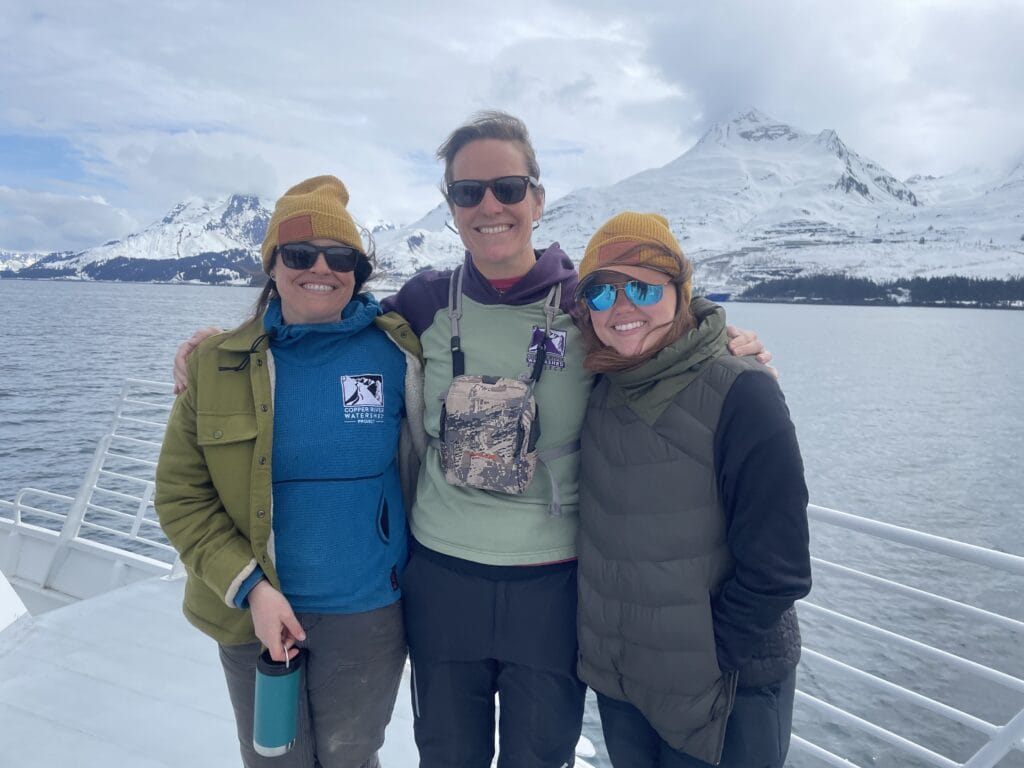
Few roads cross the watershed, but for every two miles of road there is approximately one culvert. It’s hard to avoid salmon streams when your main highway bisects one of the largest intact wetlands in the world that is home to all five species of Pacific salmon and approximately 12 million migrating shorebirds. Many of these culverts are undersized, limiting fish passage to spawning and rearing habitat and risking the infrastructure above them.
In 2008, CRWP began methodically surveying and prioritizing fish passage projects across the region, combining data from the Alaska Department of Fish and Game with their own habitat assessments. They’ve been chipping away at the resulting prioritized projects list ever since.
Data leads to reconnection
In the past eight years, CRWP has removed 13 failing culverts and reconnected 22 miles of upstream habitat for coho and sockeye salmon, coastal cutthroat trout and Dolly Varden. These projects have infused nearly $12 million into the local economy through engineering and construction contractors.
Trout Unlimited joined CRWP as a partner for the 2023 replacement of a culvert on Black Hole Creek along the Copper River Highway. This project reconnected 3.2 stream miles and 12 acres of lake habitat for coho salmon, cutthroat trout and Dolly Varden.
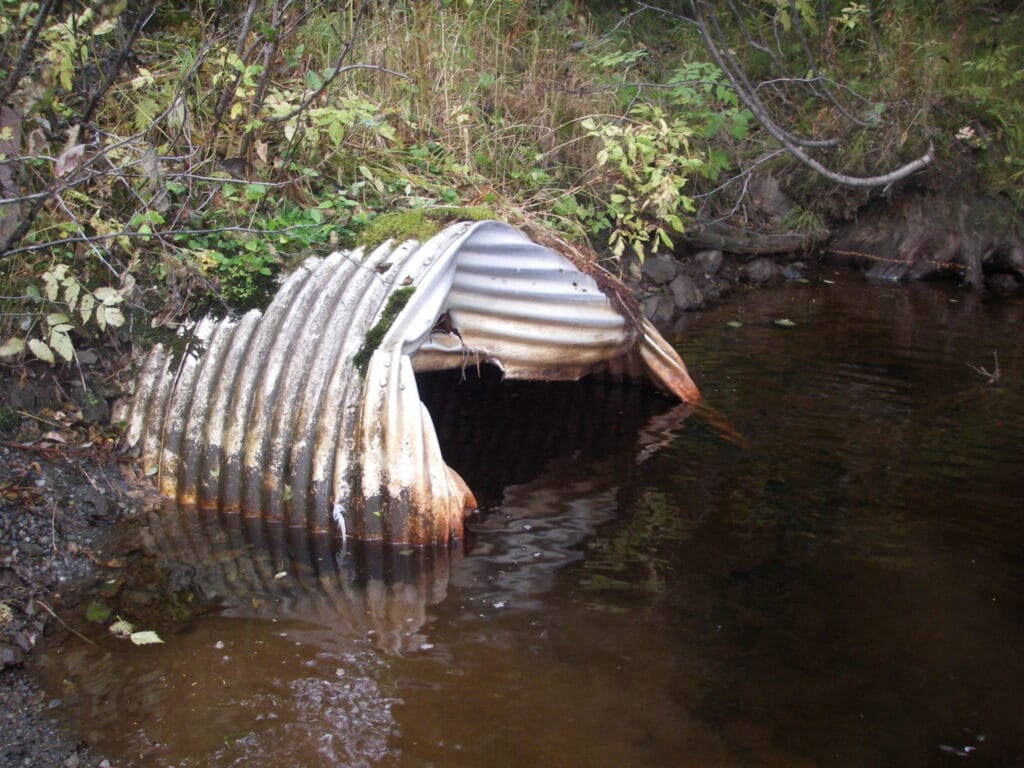
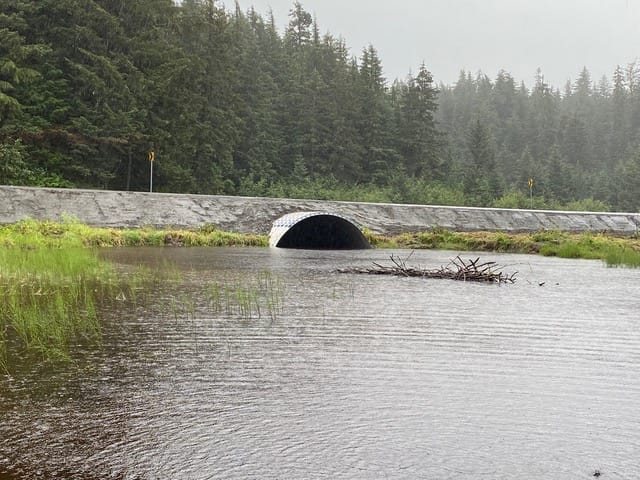
Benefiting people and fish
The CRWP doesn’t shy away from really big projects either. Their fish passage prioritization quickly identified the largest barrier in the region on Little Tonsina Creek. Its culverts were woefully undersized after a 2006 flood washed out the road and emergency repairs were made which channelized the 44-foot-wide creek into two culverts totaling 22 feet wide. In 2022, CRWP partnered with many federal, state and private partners to replace the culverts with a 100-foot-wide long bridge that reconnected over 70 miles of quality spawning and rearing habitat for Chinook and coho salmon upstream.

The work of CRWP doesn’t stop with fish passage. In 2020, CRWP partnered with the Ahtna Intertribal Resource Commission to identify the major rivers and tributaries that lacked temperature data. Now they work with regional villages to sample water and track temperature changes across the Copper Valley. They’ve consolidated this data in one central location that allows communities to access critical information to support their climate adaptation efforts. This project has also helped CRWP prioritize fish passage projects by identifying the coldest and most supportive areas for salmon to create a barrier-free passage to colder water habitats.
CRWP benefits the entire community
The environmental stewardship of CRWP extends to the younger generation in the watershed. They’ve prioritized connecting people living in the region with environmental education activities and restoration workforce development. The CRWP facilitates shared positions with regional organizations, hosts river education programs and hands on stewardship activities and has valuable youth internship and workforce development opportunities.
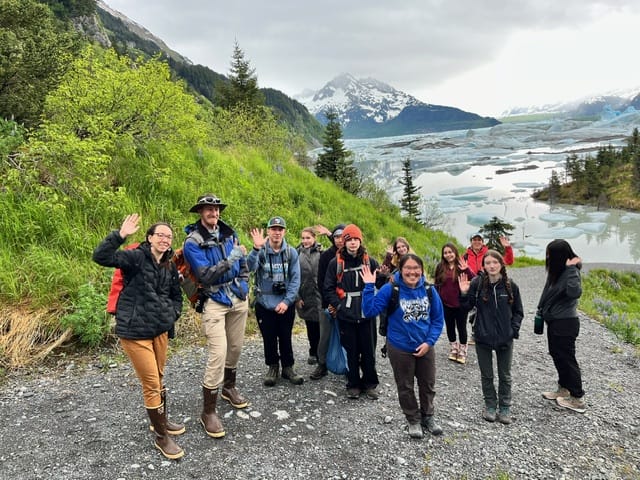
Each summer, they host their Copper River Stewardship Program where they take 10 students from 8-12th grade on a weeklong adventure boating, rafting, hiking and camping across the region. Students meet with representatives from a wide range of fields and perspectives along the way to learn about what makes this watershed so special and how they can contribute to the health of the watershed.
The many programs and partnerships of CRWP combine for a holistic approach to watershed health for the Copper River Valley and a productive future for the region’s salmon and residents. Kate and her seven year-round staff are well integrated within the community beyond their roles at CRWP. From serving on the School and Community Foundation boards, to coaching youth basketball and leading the local Brownie Troops, CRWP and its staff are making Cordova and the surrounding region a more vibrant place to live. Trout Unlimited is proud to partner with CRWP and help support its mission of sustaining a salmon-rich, intact watershed and culturally diverse communities.


